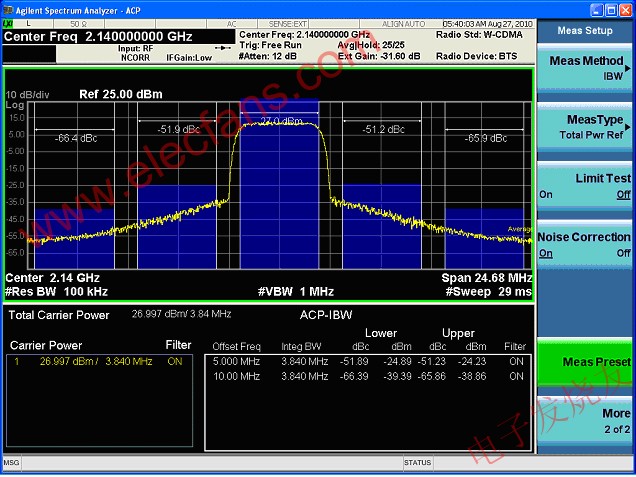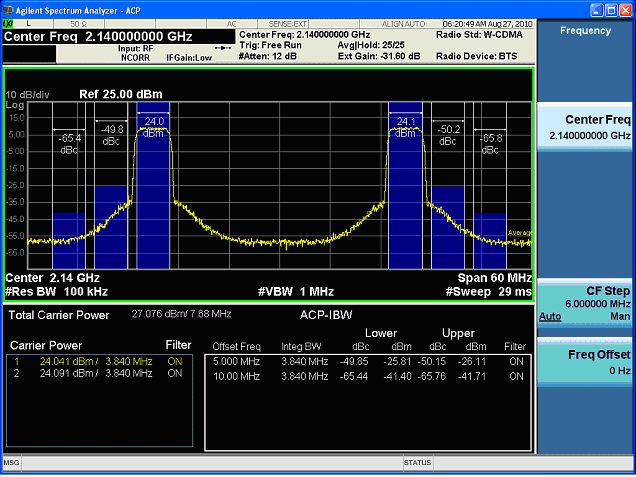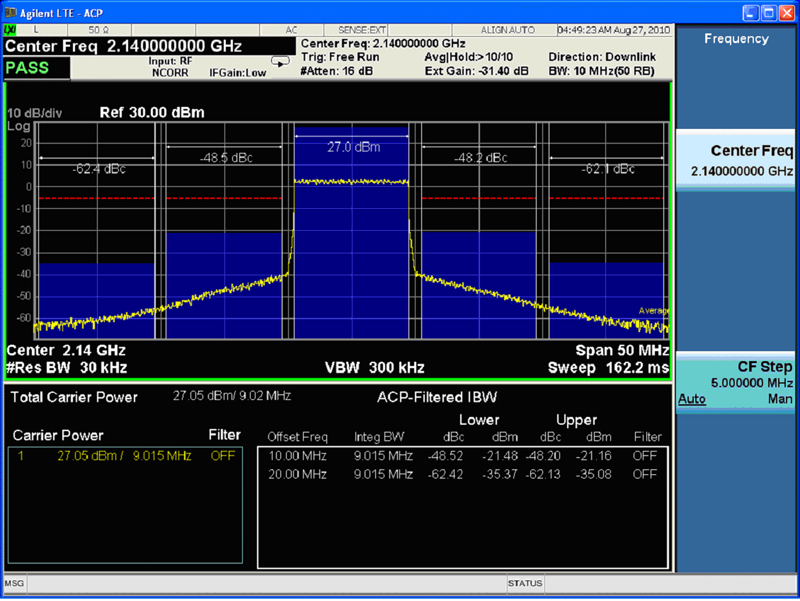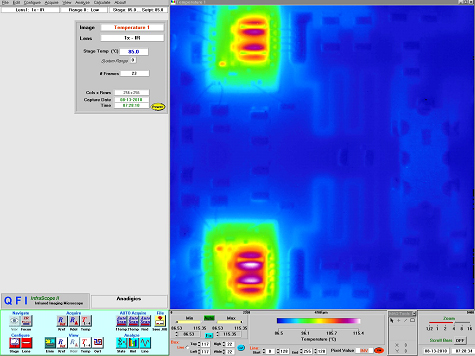With the increase in the number of smartphones and the exponential growth of data traffic per phone, mobile network operators are facing difficult choices to deploy and upgrade network infrastructure. Traditional infrastructure models include the deployment of macrocells to cover a geographic area. Microcells are often used to fill in blank areas that cannot be covered by macrocells. Calls are usually routed to destinations from macro and micro cells via terrestrial T1 lines or microwave backhaul. If the demand of users continues to exceed the connection capacity of macro cells in a specific area, operators need to increase the number of cells. However, the proliferation of feature-rich smartphones (such as Samsung ’s Epic 4G and Apple ’s iPhone) has put pressure on this traditional expansion method, and its appeal is not as good as it used to be. Whether it is from the perspective of economy or service quality, small cells seem to be the best solution.
Femtocell market heating up
Small cellular equipment, such as Femtocell, provides attractive options for upgrading existing network infrastructure and deploying 4G. They extend the macrocell model by adding hundreds or thousands of small local cellular base stations connected to mobile phone users in homes, shops or companies.
The Femto Forum, an industry organization, estimates that the Femtocell market will expand to approximately 49 million access points by 2014, when 114 million global users will access the mobile network through Femtocell. As the demand increases, the performance of the Femtocell RF power amplifier module used to propagate wireless signals throughout the coverage area will become the core of all Femtocell designs.
Power amplifier design requirements
A successful Femtocell design must balance features, functions, and costs to provide the best combination for this emerging market. In view of this, the most important requirements of Femtocell's power amplifier (PA) include: excellent RF and DC performance, support for multi-mode, multi-standard and reliability. When designing a power amplifier module, consideration should be given to the linearity, sufficient RF power required for coverage, and the ability to process large-capacity signals with a high peak-to-average power ratio (PAR). When selecting a power amplifier that meets all the above requirements for Femtocell design, the most important consideration is the semiconductor manufacturing process of the power amplifier itself.
The vast majority of mobile phones and low- and medium-power infrastructure applications use power amplifiers with gallium arsenide (GaAs) technology. In view of its excellent performance characteristics, this process is likely to continue to be used in the deployment of 3G and 4G networks. A recent research and development achievement is a bipolar transistor based on gallium arsenide, called indium gallium phosphide heterojunction bipolar transistor (InGaP HBT).
ANADIGICS 'InGaP-Plus process integrates bipolar and field-effect transistor (FET) devices on the same gallium arsenide chip, which means that functions that are usually outside the chip can be integrated into small-size surface-mount components. ANADIGICS power amplifiers usually include switches, step attenuators, power detectors and voltage regulators. The serialized products have brought significant advantages to the design team that provides Femtocell products that can execute different standards and can work in different frequency band environments.
ANADIGICS is currently designing a series of balanced, single-ended power amplifier modules used in Femtocell, Picocell, and home client equipment (CPE). Each module is specifically designed to provide the best performance for one or more wireless carriers' frequently used frequency bands. Although the specific characteristics vary with the application on which the module is based, the design method is very similar. The power amplifier module of ANADIGICS can provide high power, excellent linearity and good thermal characteristics for reliability. These products absorb the experience that ANADIGICS has accumulated in the development of power amplifier solutions for mobile phones and broadband infrastructure products. They are the basis for meeting the various needs of Femtocell.
In order to manufacture modules with extremely high linear performance and a full set of functions, ANADIGICS uses the most advanced RF circuit simulation and thermal performance analysis tools for process development based on the inherent efficiency and broadband capabilities of gallium arsenide devices. With the power characteristics of the InGaP-Plus patented technology, the ANADIGICS design team manufactures single-ended, balanced power amplifier modules with common wireless bands and common functions.
AWB series power amplifier
Earlier this year, ANADIGICS introduced AWB7123 and AWB7127 single-ended devices with an average power of + 24.5dBm. After that, ANADIGICS will launch a balanced version of these devices. AWB7223 (1.9GHz) and AWB7227 (2.1GHz) are 4.5-volt power amplifier modules designed to provide linear output power up to + 27dBm, and have higher PAR signals like WCDMA or LTE. These powers are more than enough for the needs in the home or small office empty environment.
The following uses AWB7227 as an example to introduce the characteristics of AWB series power amplifier. Figure 1 shows the spectrum performance of AWB7227 driven by WCDMA peak-to-average power ratio signal. Even if the test mode 1 (64-channel signal with 10.5dB peak-to-average power ratio) is used for testing, its adjacent channel power (ACP) performance is still higher than the standard requirements.

Figure 1. Spectrum performance of AWB7227 driven by WCDMA peak-to-average power ratio signal.
Multimode flexibility
AWB series can support work under multi-carrier. Figure 2 shows the performance of AWB7227 under two WCDMA test mode 1 signals (64DPCH carrier).

Figure 2. Performance of AWB7227 in two WCDMA test modes.
Multi-standard support
The design of the AWB series architecture is forward-looking, which makes Femtocell more flexible in terms of standard support, supporting migration and growth strategies. Figure 3 shows the performance of AWB7227 under the FDD LTE signal using the 10MHz fully filled 64 QAM (50RB) test model.

Figure 3. Performance of AWB7227 under FDD LTE signal using 10MHz fully filled 64 QAM (50RB) test model.
High reliability and high efficiency
Maximizing the mean time between failures (MTTF) of power amplifiers is the key to designing various infrastructure applications (especially Femtocell). The main factors affecting MTTF depend on the junction temperature and the semiconductor device itself. For many years, InGaP RF power amplifiers have become the preferred device for Femtocell power range applications, thanks to its good performance characteristics: InGaP technology not only has excellent reliability, but also has extremely high power efficiency.
Figure 4 is a thermal scan image of AWB7227. At the rated voltage, the device is driven to the rated power with the CW signal, and the case temperature is 85 oC, the measured junction temperature of the chip is 115 oC. Excellent performance in the efficient conversion of DC power to RF power. Higher power efficiency and extremely low junction temperature can ensure excellent average trouble-free running time and improve the overall reliability of the entire Femtocell. In addition, this high efficiency can also reduce the overall power consumption, making this type of Femtocell respond to the "green" initiative like a "backup battery".

Figure 4. Thermal scan image of AWB7227
Summary of this article
Through the careful selection of materials and the application of reasonable and reliable design principles, ANADIGICS has produced high-performance power amplifier modules, which have created conditions for the design and development of superior Femtocell solutions. As the small cell market for service providers and consumers continues to expand, ANADIGICS will continue to provide devices similar to the AWB series, with a view to bringing ubiquitous coverage and high-quality services to 3G and 4G wireless networks. For more information, please log in to the electronic enthusiast website (http: //)
72V Battery Pack ,Lithium Ion Battery Pack,Lithium Battery Pack,Battery Power Pack
Zhejiang Casnovo Materials Co., Ltd. , https://www.casnovonewenergy.com
